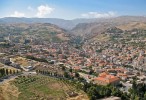There is no doubt that the pregnant woman is the perfect spa consumer; at no other stage in her life does a female need to take better care of herself. As bad habits and dodgy diets are banished in favour of healthy options, there is a gap left that is ripe for the spa industry to fill.
Pregnant women that may never have used a spa before could be persuaded that they really need its services, as may new mums that want to get their bodies back into shape, as long as the spa treatments are designed specifically for the pre- and post-natal female.
While attracting this segment of the female customer-base is a great niche to tap into, the trend for offering pregnancy treatments is a new one, particularly in the Middle East’s developing spa sector.

Advertisement
As a result, research into this niche has revealed some discrepancies between the advice and techniques offered by spas.
If you are considering introducing a range of treatments for the pre- and post-natal spa market, advice from a medical professional is essential, and learning from like-minded spa managers that have experimented with this sensitive market will also be beneficial.
Spa Manager highlights the main areas for consideration to ensure the needs of mums-to-be and new mums are addressed in a relaxing, fun and most importantly, safe, manner.
Timing and trimesters
For any spa considering developing a spa menu for pregnant clients, the first factor to decide upon is at what stages of pregnancy treatments can be offered at.
Dubai-based SensAsia Urban Spa owner Salina Handa, who has developed a whole menu — Sensmama — for pregnant women, says the spa will not perform anything other than a facial on pregnant ladies during the first trimester.
“The reason we won’t do any body treatments until a client has passed their first trimester is because miscarriages are so high in your first trimester. Most spas around the world actually take that precaution and say ‘we’re not going to touch you until you’ve passed your first trimester,’” says Handa.
Once this has passed, she says the massages and other treatments, which include Buddah Belly Mask and Scrub a Dub Mum, can be carried out “until the day you deliver”.
Aromatherapy Associates co-founder and president Geraldine Howard also prefers to err on the side of caution.
“We recommend that clients do not have our pregnancy massage until after the first trimester has passed,” says Howard.
This is not the same across the board, however. The ESPA Pre and Post Natal Treatment offered at The Spa at The Address, Downtown Burj Dubai, is suitable for women at all stages of pregnancy according to spa manager Susan Yarbug.
“We do it very gently. What we need to do is to find out how pregnant she is and any precautions, such as if she had an injury or if the doctor has given any advice, for example, if the baby has changed position,” she says.
The Elemis Nurturing Massage for Mother to Be, created by Elemis director of treatment and product development Noella Gabriel at the Elemis day-spa in Mayfair, London, and offered at Cleopatra’s Spa in Dubai, is also available at all stages of pregnancy. It is tailored to suit each of the three trimesters.
“The treatment flow is very different over the three trimesters. During the first trimester the client suffers from morning sickness with no bump and extreme tiredness. The skin becomes very dry. During the second trimester the bump and bust are growing, tiredness increases and now the body is becoming very, very dry and the lower back is changing shape,” says Gabriel.
“During the third trimester the bump is fully grown, the client may suffer from swollen ankles, little sleep and increased body temperature. All of the above must be addressed within treatment flow and design and is done so within the Elemis Nurturing Massage for Mother to Be,” she adds.
Perfect products
Another area where some uncertainties have arisen is in the choice of products suitable for pregnant women.
At SensAsia, Handa blends her own oils because she says some essential oils can be “quite dangerous” for both pregnant and breast-feeding women. Examples of suitable oils include lavender, geranium and rosewood with an almond base oil to prevent stretch marks, and lavender, cypress and geranium to reduce fluid retention, although this can only be used once the client has passed five months of pregnancy.
Yarbug agrees that no aromatherapy at all should be used, and recommends using macadamia butter, coconut, grapeseed and calendula oils. The ESPA treatment itself uses a calendula infused oil, Pink Clay Mud and various nourishing creams.









 Search our database of more than 2,700 industry companies
Search our database of more than 2,700 industry companies









